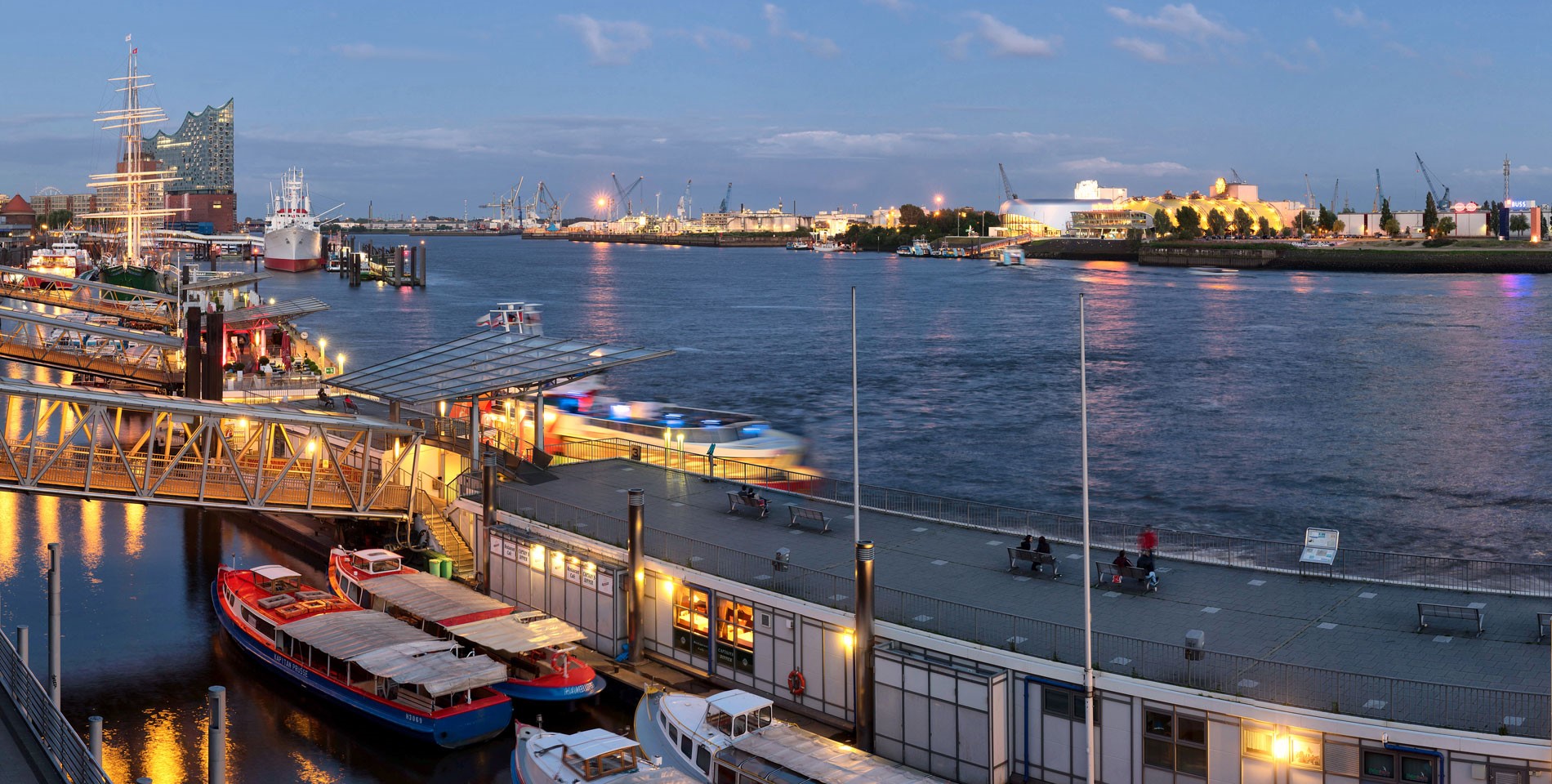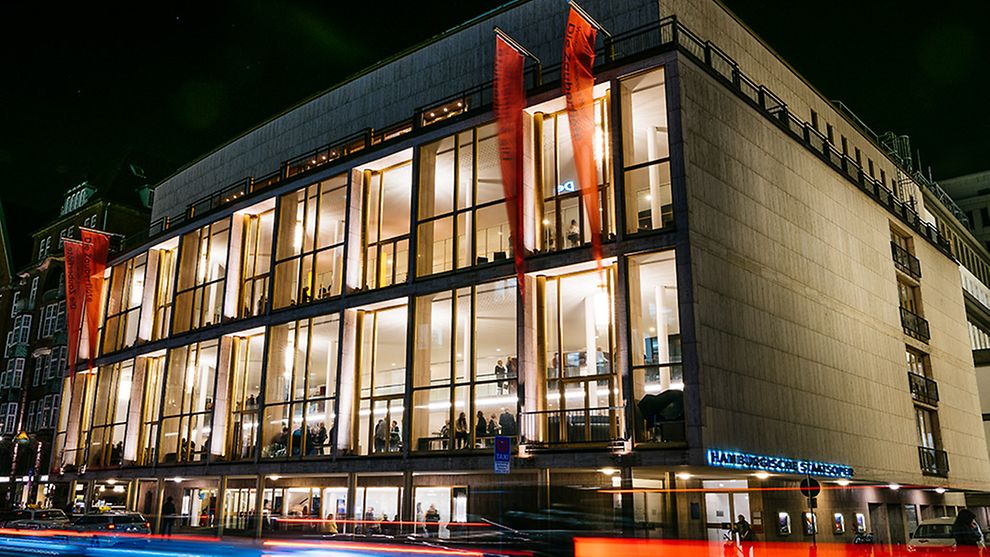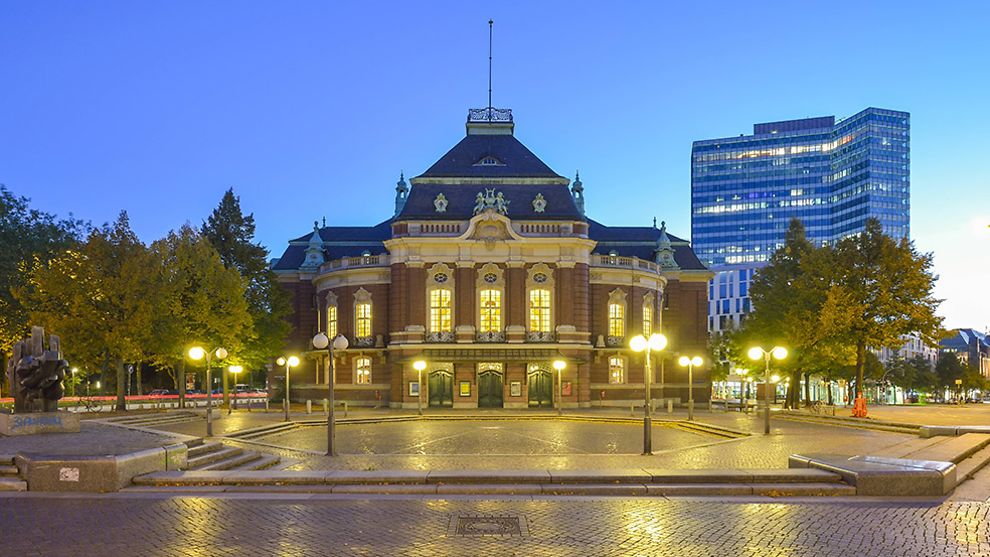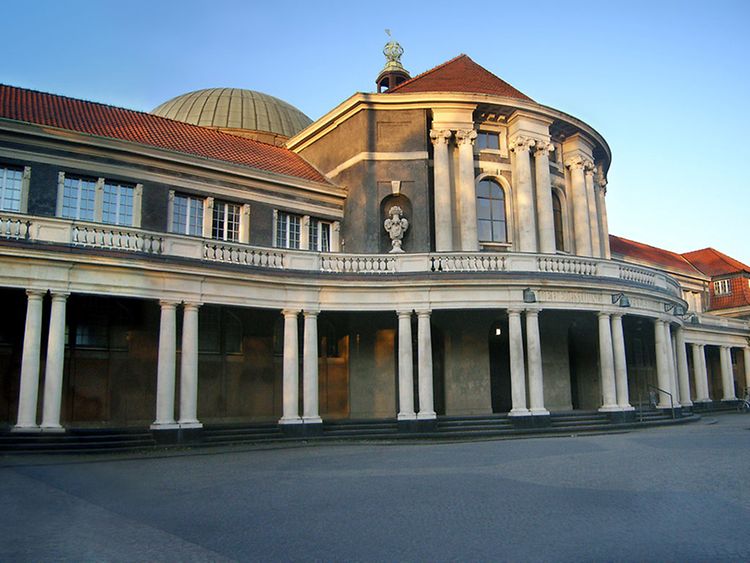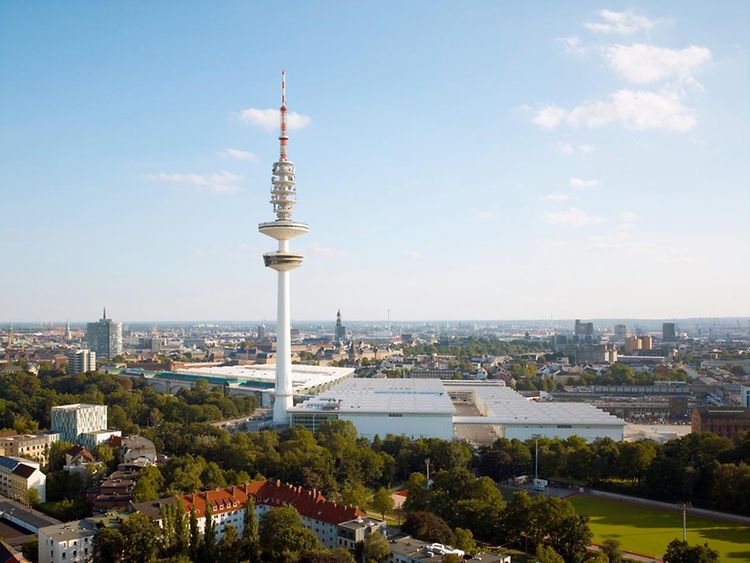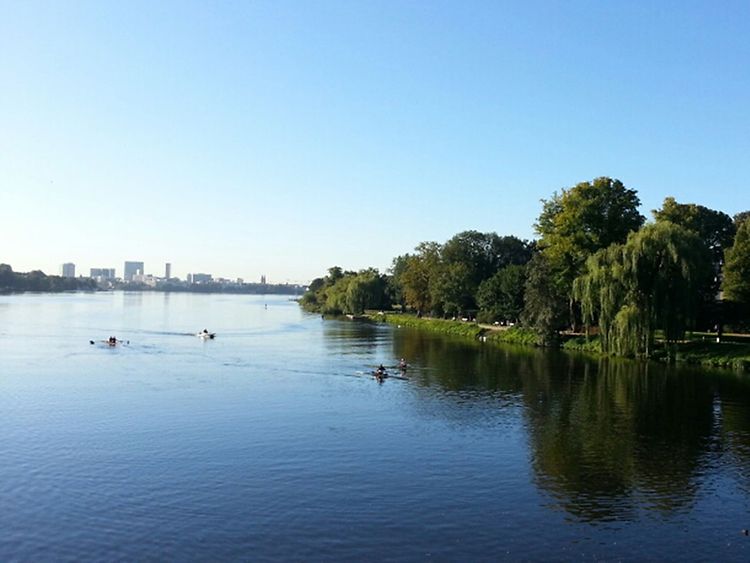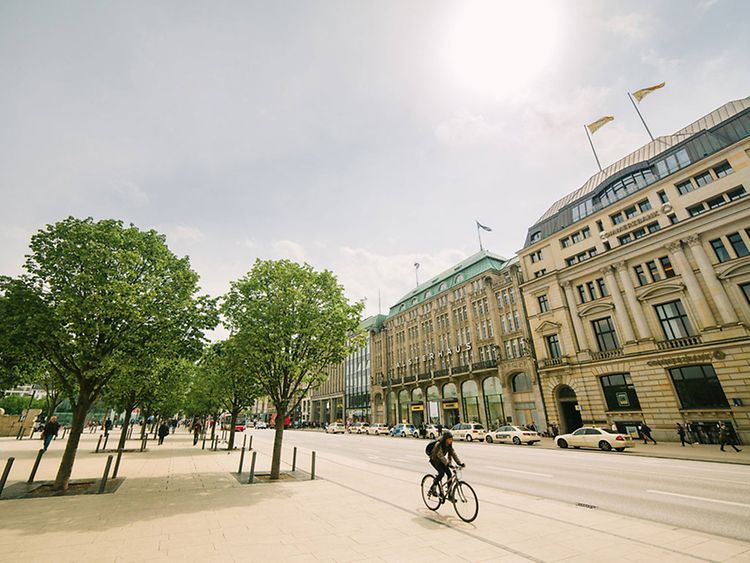The Opern-Theatrum on Gänsemarkt
Hamburg’s Staatsoper (lit: 'State Opera') has many centuries of history to look back upon. It was founded under the name of Opern-Theatrum on 2 January 1678, a long wooden building standing on the corner of Gänsemarkt and Jungfernstieg. During its first 58 years of existence, the opera house became the leading civil theatre in the German-speaking world, both in size and reputation. More importantly, it helped ensure operas were no longer exclusive for the aristocracy. becoming a meeting place of the people. During that first period, composers like Georg Philipp Telemann and Georg Friedrich Händel lived and worked in Hamburg and contributed artistically to the city's opera house. In 1705, Händel premiered his first opera (‘Almira’) at the Opern-Theatrum.
Demolition and Reconstruction
Due to financial struggles and a lack in ticket sales, the opera was closed in 1738. Touring comedy troupes still occasionally used the building for performances until its final demolition in 1763. The open space was used to build another theatre, housing operas, musical theatre and drama performances. The theatre’s dramatic advisor Gotthold Ephraim Lessing weighed in and the new building was officially named the German National Theatre. Lessing’s works, as well as plays by Schiller, Goethe and Shakespeare, were prevalent at the time. In 1810 another name change occurred: it was now called the Hamburg Stadt-Theater.
Wagner and Verdi at the Stadt-Theater
In 1827, the aging wooden building was yet again replaced by another venue at its current location. It could fit a stunning 2,800 guests and offered state-of-the-art acoustics, helping Hamburg to cement its reputation as a music metropolis. From 1844, both Richard Wagner and Giuseppe Verdi were employed at the Stadt-Theater, their work defining music for years to come.
In 1873, Bernhard Pollini took on directing duties and managed to stabilise the often-strained financial situation of the opera house by arranging public funding. And the new situation proved fruitful: six years under composer Gustav Mahler blessed Hamburg with an unrivaled plethora of premieres.
The state opera during the wars
In the first third of the 20th century, the works of Richard Strauss and Richard Wagner dominated the repertoire. WWI made it increasingly hard to keep up operations. Many key figures had to serve in the military, despite stable numbers of performances. Despite continued hardship between the wars, another remodeling was granted in 1925. Heinrich K. Strohm was appointed by the Nazi regime as managing director. He was responsible for another change in name: from 1934, the opera was called Hamburg State Opera. During WWII, air raids destroyed the auditorium, though the stage remained intact. One year after the war, the state opera again opened its doors. Visitors sat in a makeshift auditorium until 1953, when reconstruction measures commenced. Two years later, Mozart’s The Magic Flute was the first performance in front of the new auditorium's 1,770 seats.
In 1959, Rolf Liebermann became artistic director. In 14 years, he oversaw 28 different premieres and lay the groundwork for a certain Placido Domingo’s career.
The modern building
In the early 2000s, the opera was renovated once again. The building now houses three rehearsal stages, as well as practise rooms for the orchestras, choirs and ballet ensembles. Offices, lounges and workshops are located on the upper levels.
Currently, Frances Delnon acts as intendant while Kent Nagano took on double-duties as musical director and chief conductor. Both The Hamburg Ballet under John Neumeyer and the Philharmonic State Orchestra Hamburg are resident at the Hamburg State Opera.
The Staatsoper during the COVID-19 Pandemic
During the COVID-19 coronavirus outbreak of 2020-2021, Hamburg's Staatsoper has been one of many institutions to bring some much-needed cultural relief via online streaming.
The State Opera is offering viewers plenty of goodies to stream at home, with the Staatsoper ballet providing viewers with a rotating selection of streaming material that is a must-see for ballet fans. Behind the scenes videos and insider info abound!
Address:
Große Theaterstrasse 25
20354 Hamburg
Getting there:
U1 station Stephansplatz
U2 station Gänsemarkt
Further information can be found here.
